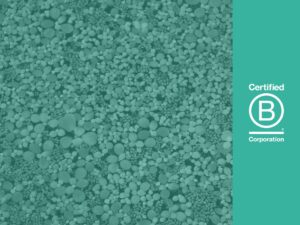
Top 10 things Digital Marketing Managers can do to reduce carbon footprint
We encourage you to become part of the global mission to make the internet greener. Here’s how you can help:
- Be a sustainability champion “No one is too small to make a difference.” Greta Thunberg. The best thing you can do is become a sustainability champion in your organisation. Speak to your colleagues and try to create a more sustainable working environment by reducing the negative and maximising the positive environmental impact in all aspects of your organisation. Be the change and empower others to make positive changes within and beyond your organisation.
- Know the carbon footprint of your website “If you can’t measure it, you can’t manage it.” Peter Drucker. Knowing the carbon footprint of your website is the first step to understanding how you can reduce it. But the rule of thumb generally is that the bigger the site, the more emissions it generates. Reducing the size of your site to a minimum will not only reduce its carbon footprint, it will also increase your page speed. Wholegrain Digital is a UK-based web design agency that developed the world’s first carbon calculator for web pages. They also developed a Carbon Badge which you can install for free to the footer of your website to raise awareness about the digital carbon footprint and also be transparent with your customers about your own approach to this issue. We are extremely proud to have collaborated with Wholegrain Digital on a brand new Digital Carbon Footprint Audit for websites which launched in 2022. This tool allows you to calculate the carbon footprint of your entire site. Using real-time data from Google Analytics, the tool will show you which pages are the most polluting ones and, crucially, what’s causing it so that you can make positive changes.
- Switch to green hosting Make your website more sustainable by switching to a green hosting provider. Find out who your hosting provider is, where are they based, and how they power their computing systems. You can be part of the mission to make the internet sustainable by using a website hosting powered by renewable energy. If you’re unsure where to find one, visit https://www. thegreenwebfoundation.org/, which offers the largest Green Hosting Directory.
- Reduce digital waste (Improve load speed and reduce file sizes.) Every element on your site is data that needs to be loaded each time someone visits your site. The more elements you have, the longer it takes to load them all. If any element on your website significantly slows it down, consider removing it or resizing it. If you want to share images on your site, reduce their pixel size to a minimum first. There is no need for expensive software, you can use free online tools that will do this for you. Try https://tinypng.com/ or https://www.reduceimages.com/. This will help increase your page speed and reduce the amount of data to load the whole page (great for users as well as the environment). Try to do the same with videos or any downloadable files to make sure your site is fast and easy to load.
- Choose quality over quantity “Make everything as simple as possible, but not simpler.” Albert Einstein. By optimising your website for search engine rankings (SEO), improving site navigation and accessibility (UX), and creating great content, you are helping people find what they want quickly and easily. This helps them spend less time browsing the web and, therefore, consume less energy. Follow best practice and you will increase website efficiency and reduce consumption of energy.
- Reduce travel for business meetings Today’s technology allows us to connect with people anywhere in the world, which can help us significantly reduce the CO2 emissions from travel as well as save us a lot of time. Coronavirus made us aware, more than ever before, that it’s possible, and sometimes even more comfortable, to join meetings and events from the comfort of your home. Once things go back to the new normal, try to stick to conference calls whenever possible. You can use tools such as Hangouts, Webex, Zoom, Teams, or Skype.
- Choose sustainable and ethical branded merchandise There is a sea of branded plastic keyrings, badges, pens, and many more products that no one really needs. Research shows that 88% of consumers want brands to be more environmentally friendly and ethical. People care, and you can show them that your company cares too. Don’t fill customers’ lives with stuff they don’t need. If you do use promotional merchandise, choose an environmentally friendly option.
- Include sustainability in your events, meetings and training When you run any events, meetings, or training, cut down any waste by avoiding plastic water bottles and use reusable ones instead. If you serve food, try to have at least 50% plant-based options. This is important because meat-centric Western diets account for a fifth of all global greenhouse gas emissions. Having plant-rich diets is ranked as the fourth best solution to solve climate change, according to Project Drawdown. Every small step towards a sustainable future matters. It shows you care and sets a good example for your colleagues and clients.
- Join a movement Climate change is everybody’s business. We’re in this together and it is up to all of us to build a better future for everyone. Join those who are using their voices and choices to make a difference.
- Sign the Sustainable Web Manifesto and declare your commitment to create a green web.
- Become a B Corporation and publicly commit to reducing your carbon emissions to net zero by 2030.
- Join Extinction Rebellion to compel government action to avoid fast-approaching tipping points in the climate system, biodiversity loss, and the risk of social and ecological collapse.
- Be part of The Climate Reality Project to move the conversation about climate change forward and turn awareness into action.
- Join The Countdown, a movement powered by TED and Future Stewards, to get informed and spread the word about the climate crisis.
- Use the Sustainable Development Goals by the United Nations as guidelines to create a better world by 2030 by ending poverty, fighting inequality and addressing the urgency of climate change.
- Support those who are making a difference “The wise man does not lay up his own treasures. The more he gives to others, the more he has for his own.” Lao tzu. Being able to give is a gift in itself. It’s a selfless act that is good for others and for our physical and mental wellbeing. There are many organisations and charities that are working hard to make a difference and if we’re lucky enough to be able to help them, we really should. Below are our top choices (related to climate change) but there are many, many more causes you can support. Pick the one that’s closest to your heart and take it from there.
- Join 1% for the Planet and commit to giving back to credible, environmental causes.
- Cool Earth is a charity that works with local people to halt deforestation and climate change.
- SolarAid combats poverty and climate change by providing access to solar lights in some of the most remote regions of Malawi and Zambia.
- Building Malawi helps build sustainable schools, libraries and the largest sports complex in the country. They also collaborate with the local permaculture centre to teach local children how to plant trees and take care of them.
- All Hands and Hearts helps families and communities recover from increasingly frequent natural disasters around the globe by building safe, resilient schools, homes and other community infrastructure.
- 4Oceans is on a mission to end the ocean plastic crisis by cleaning the ocean and coastlines and helping to change consumption habits.
- Rainforest Alliance works with farmers, forest communities, companies and consumers to create a world where people and nature thrive in harmony.





